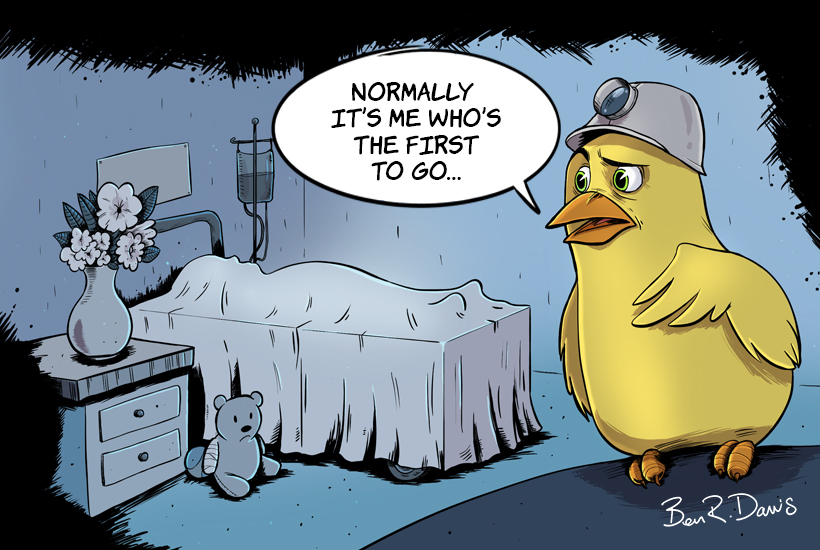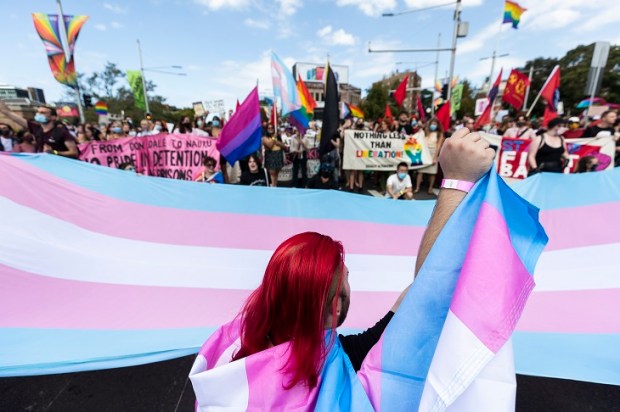Peter van Onselen was right when he wrote in The Weekend Australian recently that there is an even more significant debate than those flowing out of the Super Saturday by-elections that will hit the federal parliament in the weeks after it returns from the winter recess – the one involving David Leyonhjelm’s private member’s bill to allow the territories to enact euthanasia laws if they so wish. According to van Onselen:
Polling tells us that Australians overwhelmingly support euthanasia, but such polls ask only the simple question whether a person has the right to die. I would be inclined to answer yes to such a question, but I have enormous reservations as to how such a concept might be enacted and I see cases in other countries where it has been enacted that concern me.
Again, van Onselen has every right to be utter caution. For example, children in Europe are now being given the opportunity to end their own lives with medical assistance and government approval. In fact, in 2014 Belgium removed any age limit on the practice, just a mere twelve years after legalizing euthanasia for adults.
Supporters of the legislation for child euthanasia argued that the law would affect, in practice, “an extremely small number of children, who would probably be in their teens”. However, the reality of the situation is proving to be quite different. Michael Cook, from BioEdge, recently wrote:
Three minors have been euthanised in Belgium since euthanasia for children was legalised in 2014. According to the latest report from the government agency (there’s a report in French here) which tracks euthanasia deaths, the children were 9, 11 and 17 years old. Two died in 2016 and 1 last year.
Under the existing law, their request for death has to be voluntary and well-considered and the patient must be suffering unbearably, with no prospect of improvement.
So much for it ‘probably’ only involving teenagers. What’s more, according to Reuters, “In the ten years to 2013, the number of euthanasia cases in Belgium rose from about 1,000 to 8,752, according to official records.” So, it seems that assisted suicide is growing in overall popularity, especially in that particular country, as well.
But just stop and seriously consider the sentence, “their request for death has to be voluntary and well-considered”. How can a child of nine or eleven make a ‘voluntary’ and ‘well-considered’ decision about their own life, especially when they are in pain? I have enough trouble each evening convincing my children to eat a nutritious meal when they are well. How could they possibly exercise the responsibility to end their own lives when they are not?
The move to legalise child euthanasia is also now being debated in Canada, where it is referred to by the truly Orwellian expression, “Medical Assistance in Dying”, or MAID. Euthanasia, or physician-assisted suicide, has been legal in Canada, for people over the age of eighteen, since 2016. But as Gali Katznelson has recently written in a blog for Harvard Law:
As it stands, the arbitrary age cut-off prohibits some people from considering the option to face their suffering in a way that is right for them. This has the potential to be discriminatory and unjust. As more data is gathered about societal attitudes in Canada, hopefully information about the unmet need for MAID for minors will prompt the public’s interest in extending the law to mature minors. With sufficient research and oversight, it may indeed be ethically permissible to entrust mature minors with greater agency over their end-of-life decisions.
Lord Alex Carlile, co-chairman of Living and Dying Well, a UK parliamentary group opposed to euthanasia, argues in response:
The euthanasia of those children is plainly contradictory of the European Convention on Human Rights. No parent and no public authority has the power to take away the life of anyone who is a child, whoever they are. The Belgium government is far too relaxed about this. It is not ensuring that appropriate checks are carried out and standards maintained. Belgium is perhaps the state that is causing the greatest concern in Europe about the way it administers euthanasia.
Of even more concern, The Brussels Times, states that there has been a 13 per cent increase in euthanasia cases in 2017 compared to the year before. What’s more:
The majority of the increase was accounted for by patients aged between 60 and 89 years, who were suffering from polypathology – a combination of different illnesses, such as blindness, hearing loss and incontinence, which together make life for the patient unbearable.
In fact, the same article goes on to state that, “.polypathology patients requesting euthanasia have almost doubled in the last four years from 232 to 444.” Note that what classifies as being ‘unbearable suffering’ is itself subject to personal re-definition.
If all of this does not cause politicians—as well as various media personalities—in Australia to stop and consider what a likely ‘bracket creep’ will look like if euthanasia laws in this country are adopted, then I don’t know what will. Like a canary in the mineshaft, this should act as a wakeup call as to where things will quickly lead.
According to New Statesmen, one of the top twenty political songs is, “Where have all the Flowers Gone” by Pete Seeger. It’s haunting melody and simple lyrics evoke a timeless sense of grief and loss. And I can’t but help to see a connection with the latest retrogression of allowing children to access euthanasia.
Do you hear the song that the canaries are singing? It’s a lament for all of the little flowers whose lives have been prematurely and needlessly snuffed out. And that is the brave new world our society will enter in if Senator Leyonhjelm’s bill is allowed to pass into law.
Mark Powell is the Associate Pastor of Cornerstone Presbyterian Church, Strathfield.
Cartoon: Ben R Davis.
Got something to add? Join the discussion and comment below.
Got something to add? Join the discussion and comment below.
Get 10 issues for just $10
Subscribe to The Spectator Australia today for the next 10 magazine issues, plus full online access, for just $10.


























Comments
Don't miss out
Join the conversation with other Spectator Australia readers. Subscribe to leave a comment.
SUBSCRIBEAlready a subscriber? Log in